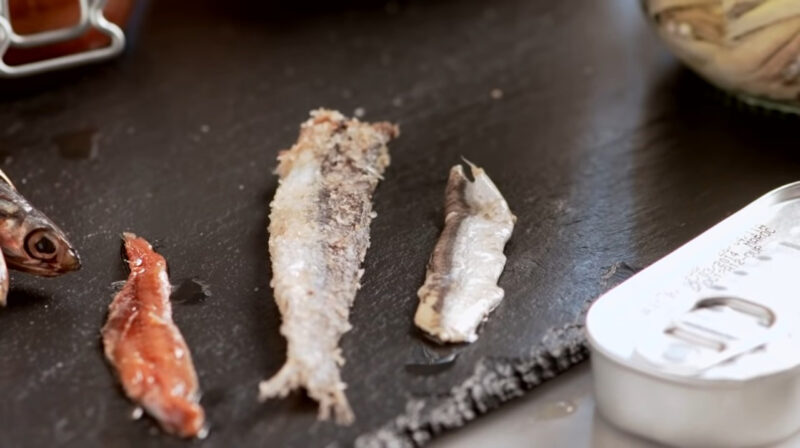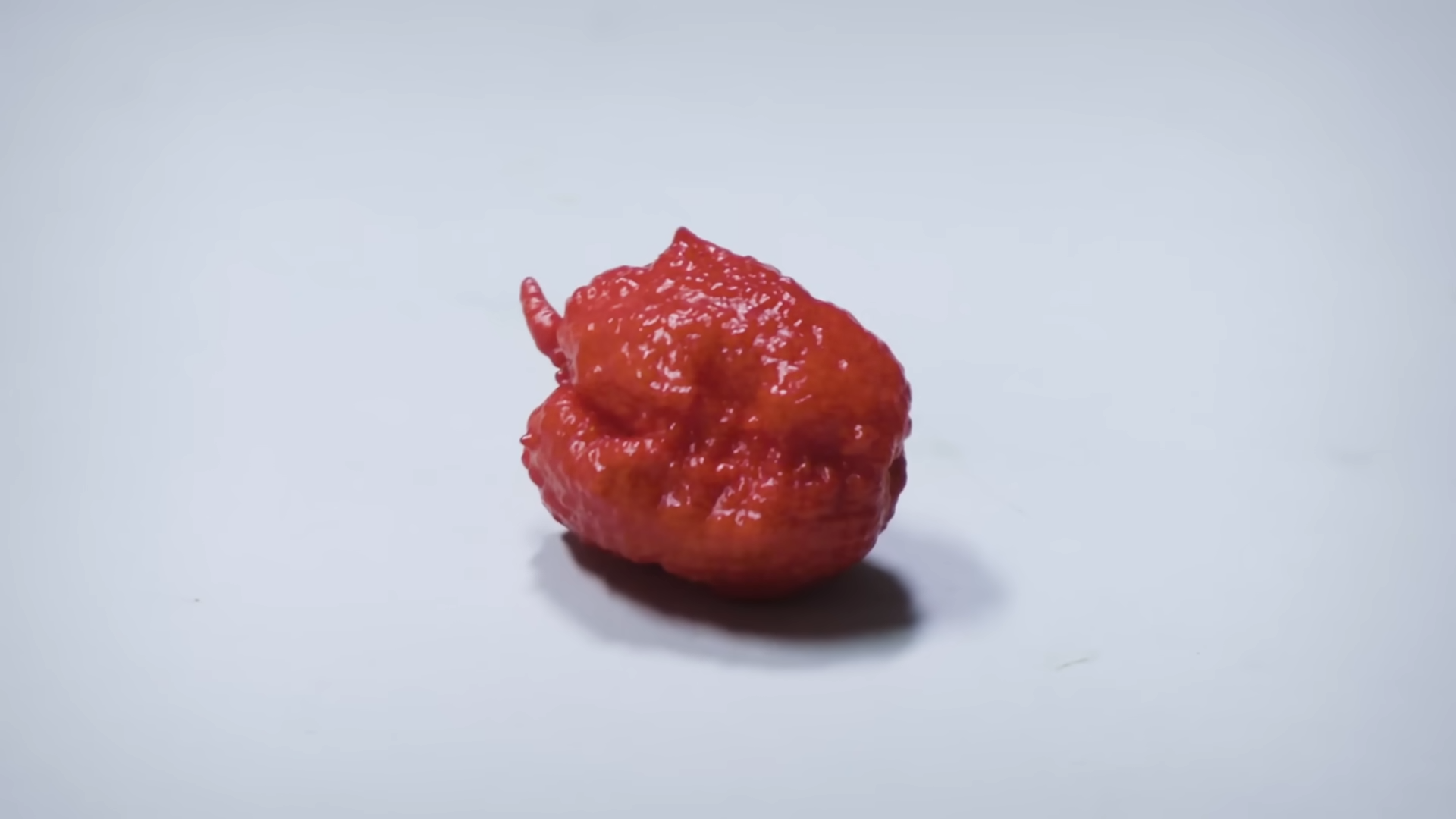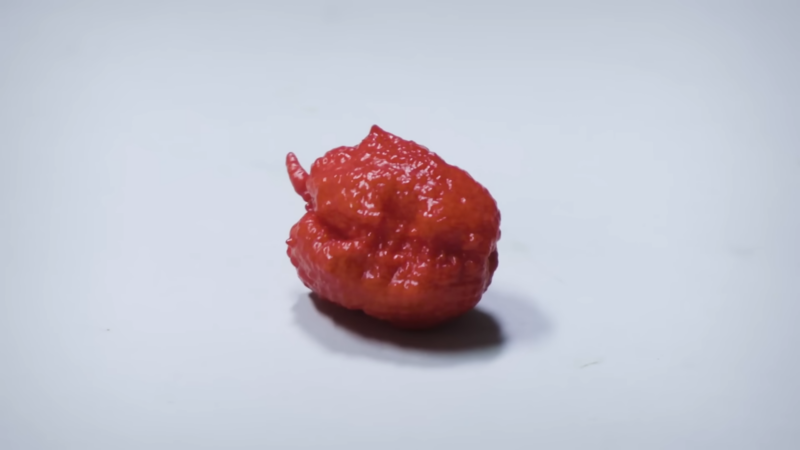
Throughout my culinary adventures, the distinct taste of anchovies has always been a topic of intrigue. While they may not look like something charming and significant at first, they can really impact how you see seafood.
Some friends passionately advocate for its unique flavor, while others can’t quite wrap their heads around its appeal. I decided to give them a chance.
Now really, how do they taste like? Here are my two cents.
What Should You Know About These?
Anchovies are small, oily fish that are usually found in the Mediterranean and the Black Sea. They’re often preserved in salt and packed in oil, which gives them their characteristic strong flavor.
Origin and Types
Anchovies belong to the family Engraulidae and are primarily found in warm seas. There are several species, but the European anchovy (Engraulis encrasicolus) is the most commonly consumed.
- European Anchovy: Found in the Mediterranean and parts of the Atlantic.
- Peruvian Anchovy: Thrives in the Pacific off the coast of South America. Japanese Anchovy: Common in the waters around Japan.
How Do They Taste Like?

Describing the taste of anchovies can be a challenge due to their complex flavor profile. They’re salty, fishy, and have an umami kick, which is why they’re often used to enhance other dishes. I Preserved in salt, it’s no surprise that these fish are salty.
But beyond that, they have a deep umami flavor, often compared to soy sauce, parmesan cheese, or for some even oyster sauce. This umami quality can enhance the flavors of other ingredients in a dish.
- Umami: Often described as the fifth taste, it’s a savory flavor found in foods like tomatoes, cheese, and soy sauce.
- Salty: Due to the preservation process, they have a pronounced saltiness.
While they are fishy, it’s a different kind of fishiness than, say, tuna or salmon. It’s more intense and can be overpowering for some. The texture is also unique – soft, yet slightly chewy.
- Fishiness: This is a strong flavor, so it’s often recommended to use them sparingly.
- Texture: They can be a bit oily due to the preservation process.
Pairing Them in Dishes
Given their strong flavor, it’s essential to know how to pair them correctly in dishes. When used right, they can elevate a dish to new heights. Certain ingredients work exceptionally well with the taste of these fish. Some classic pairings include:
- Olives: The brininess of olives complements the saltiness.
- Tomatoes: The acidity and sweetness of tomatoes can balance out the strong flavor.
- Garlic: Adds depth and complements the umami. While they’re versatile, there are some dishes where their strong flavor might not be suitable. For instance, in a delicate broth or a light salad, they might overpower other flavors.
- Light Broths: Their intense flavor can dominate.
- Desserts: It goes without saying, but they’re not suitable for sweet dishes.
How About Nutrition?
Anchovies are not only flavorful but also packed with nutrients. They offer a range of health benefits, making them a valuable addition to a balanced diet. They are a rich source of omega-3 fatty acids, protein, and various essential vitamins and minerals.
Here’s a table breaking down the nutritional content of a typical serving of anchovies (about 20 grams or 5 small fish):
| Nutrient | Amount |
|---|---|
| Calories | 42 |
| Protein | 5.7g |
| Total Fat | 1.7g |
| Saturated Fat | 0.4g |
| Omega-3 Fatty Acids | ~1.2g |
| Total Carbohydrates | 0g |
| Sugars | 0g |
| Sodium | 730mg |
| Potassium | 120mg |
| Calcium | 60mg |
| Iron | 0.6mg |
| Vitamin D | 8.9 IU |
| Vitamin B12 | 0.9µg |
Health Benefits
Anchovies are more than just a tasty treat; they offer several health benefits:
- Heart Health: The omega-3 fatty acids in anchovies can help reduce the risk of heart disease by lowering blood pressure and reducing cholesterol levels.
- Bone Health: They are a good source of calcium, which is essential for maintaining healthy bones and teeth.
- Mental Health: Omega-3s are also known to support brain health and may reduce the risk of mental disorders.
Worldwide Recipes
Anchovies have found their way into the heart of many global cuisines, each culture adding its unique twist to this versatile fish.
In the Mediterranean region, anchovies are a cherished ingredient. They’re featured in dishes such as:
| Dish | Description |
|---|---|
| Salade Niçoise | French salad with olives, eggs, and anchovies. |
| Bagna Càuda | Italian dip with garlic, anchovies, and olive oil. |
| Anchoïade | Provençal anchovy paste, often spread on bread. |
| Pizza Puttanesca | Pizza with anchovies, olives, and capers. |
Asia, with its rich culinary heritage, has embraced anchovies in various forms:
| Dish | Description |
|---|---|
| Nasi Lemak | Malaysian rice with anchovy sambal |
| Myeolchi Bokkeum | Korean stir-fried dried anchovies |
| Ikan Bilis Sambal | Indonesian anchovy chili paste |
| Hamsi Tava | Turkish pan-fried anchovies with lemon |
Anchovies have also made their mark in Latin American cuisines:
| Dish | Description |
|---|---|
| Causa Rellena | Peruvian potato dish with anchovies. |
| Tostadas de Anchoas | Mexican toasted tortillas topped with anchovies, avocado, and salsa. |
Storing and Buying Tips
To truly appreciate the flavor, it’s crucial to select the best quality and store them appropriately.
Selecting the Best
When on the hunt for anchovies, consider the following: If purchasing fresh, they should be shiny, with clear eyes and a clean, oceanic smell. For canned or jarred varieties, ensure the packaging is undamaged and the expiration date is far off.
Those found in the Mediterranean or Cantabrian Sea are often considered superior in quality. Anchovies can be found in salt, oil, or vinegar. Each has a distinct flavor, so choose based on your preference.
How to Store Them?
Proper storage ensures that the anchovies retain their flavor and nutritional value:
- Refrigeration: Once opened, transfer to a sealed container, ensuring they’re submerged in oil, and consume within a week.
- Freezing: Fresh can be frozen for up to six months. Lay them flat in a single layer on a tray, freeze, then transfer to a zip-lock bag.
- Drying: In some cultures, these are sun-dried for prolonged storage. Once dried, they can be stored in a cool, dry place for several months.
Cooking Tips

To make the most of them while cooking, you should do:
- Rinsing: If they’re too salty, rinse or soak in milk to mellow out the flavor.
- Melting: They can “melt” into sauces, adding depth without a fishy overtone. Simply cook them with a little oil or butter until they disintegrate.
- Balancing: Their strong flavor can be balanced with acidic ingredients like fresh lemon juice right from the squizeer or vinegar.
FAQ
Why do some people dislike the taste of anchovies?
The strong and intense flavor of anchovies can be overpowering for some, especially if they’re not accustomed to it.
Do anchovies have any dietary restrictions?
Anchovies are fish, so they’re not suitable for vegetarians or vegans. However, they are generally acceptable for those following pescatarian or kosher diets.
Are there vegetarian or vegan substitutes for anchovies?
Yes, ingredients like seaweed, soy sauce, or miso can mimic the umami flavor of anchovies in recipes.
Can I use anchovies as a substitute for MSG in recipes?
Yes, anchovies can provide a natural umami boost to dishes, similar to MSG.
How do I know if my anchovies have gone bad?
Spoiled anchovies may have an off or rancid smell, a change in color, or a slimy texture. Always check before consumption.
Summary
From the Mediterranean shores to the bustling streets of Asia, anchovies have carved a niche for themselves in the global culinary scene. One thing’s for sure: whether you love them or are still on the fence, anchovies are a testament to the rich flavors our world has to offer.
If you haven’t tried them out yet, you definitely should.
Related Posts:
- What do Lentils Taste Like? What Should I Expect? -…
- What Does Walleye Taste Like? Diving into the Deliciousness
- What Does Lamb Taste Like? Know This Before You Try!
- What Does Mackerel Taste Like: What's the Buzz About?
- Do Anchovies Have Bones: Bony Business
- From Earth to Plate: A Culinary Adventure into the…




















